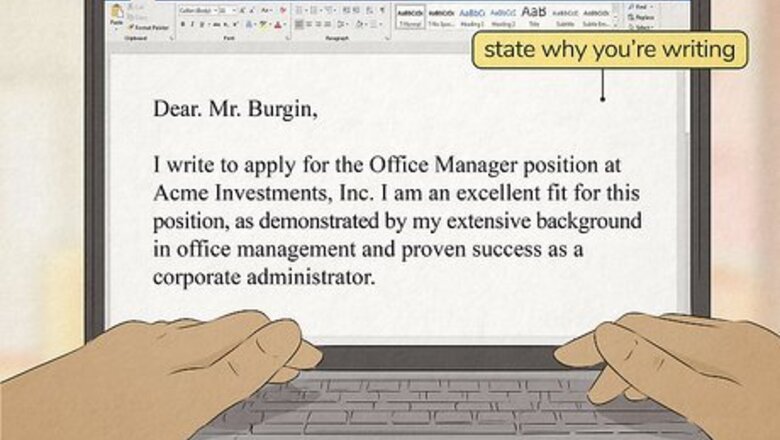
views
Writing a Job Application
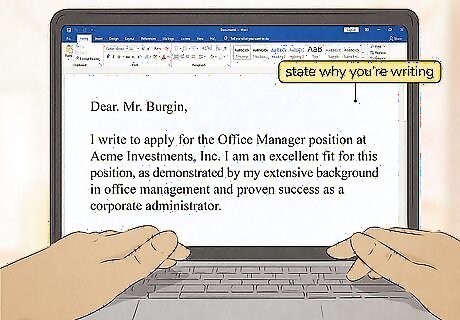
Say why you're writing and what you're applying for in the first sentences. Don't let anyone who picks up your letter be confused about what they're reading. The very first things that someone should read should let them know what this letter is, and how they should read it. A good example would be: "I'm writing to apply for the Chimney Sweep position advertised in Rolling Stone. I think my experience in the heating industry makes me uniquely qualified for this position. Please find my application materials and a brief description of my qualifications below." Don't write your name until the signature. It'll be in the header and in the sign-off, so there's no reason to put it in the body of the letter itself.
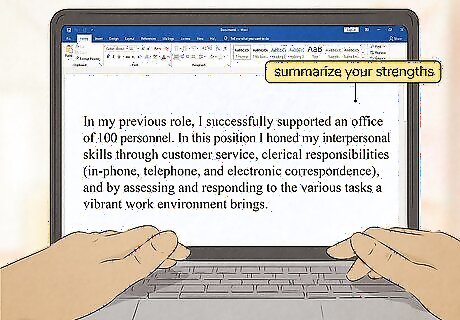
Explain why you are the best candidate. What's unique about you? What do you bring to the table? What will you be able to do for this company, better than any other applicant? A good application letter will stand out form the pack. Be specific. Who are you? Where do you come from? What's your story? These details are important. HR screeners read hundreds of these. Describe your ambitions. Where do you want to go? How will this opportunity help you get there? What skills and experiences make you the right fit? Be as specific as possible and avoid vague language. It's better to describe a time you solved a specific problem at your last job than to just write, "I'm a good problem solver at work."
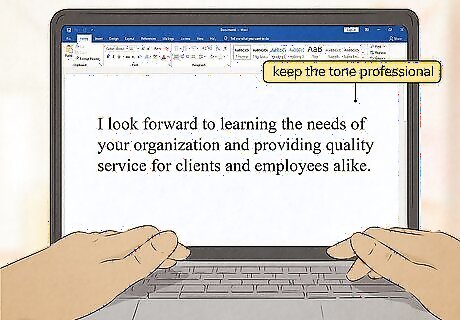
Keep the tone professional. When you're applying for employment, it's important to keep the tone focused on the skills and experiences that make you qualified for employment at the business. It should be less the story of your life and more the reason that you'll be a good employee for the business. Use specific examples to make yourself stand out. Tailor it to the business. If you're applying to work at a record store, you need to talk about music. If you're applying to work at a tech company that writes, "Tell us something totally rad about yourself!" it's probably ok to be a little more informal.
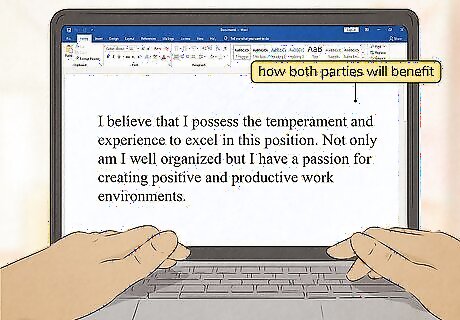
Explain how both parties will benefit from your selection. What's at stake in this decision? What will you bring to the table? How will the business or school benefit from having you around? Imagine yourself going to work there, and describe specifically what you can do to help. Don't over-promise. Telling someone that you can guarantee that you'll be able to turn around their sales figures in six months or less is a good way to get fired in six months.

Do some research. If you want to stand out from the other applicants, do a little research into the history of the business to which you're applying. What do they do? What is their basic business philosophy? What direction is the business moving in? Any kind of job requires this type of research. If you apply to a restaurant, you need to be familiar with the menu and the kind of customers the restaurant attracts. Consider eating there a few times before you apply. Don't show you're familiar by criticizing a business and telling them what you can do better. Not the time to offer a harsh criticism of a business plan that you don't really know anything about.
Writing a School Application
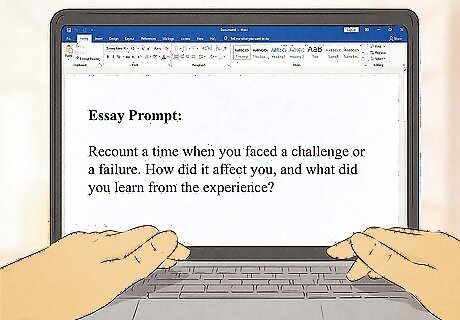
Address the prompt. If you're writing for a college application or an internship, there will almost always be a short prompt for you to respond to. These are often quite short, which means you'll have some room to get creative. Common prompts include things like, "Outline your qualifications for this position" or "In writing, explain how this position would affect your career goals." Sometimes, the prompt will be as short as, "Tell us something interesting about yourself." If there is no prompt, but you still feel the need to introduce your application with a letter, it's usually best to keep it as short as possible. Explain what you're applying for, why you're applying, and thank the contact for their consideration. That's it.
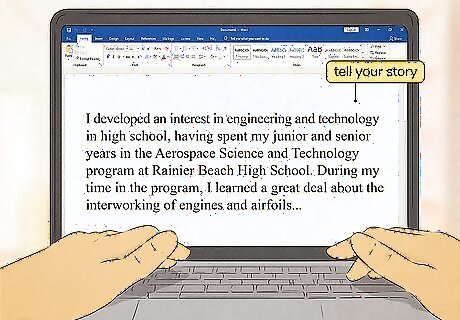
Tell your story. College applications are a unique opportunity to make yourself stand out beyond the numbers of your resume and your transcript. Lots of applicants think the letter should make them sound "smart," but it's better to stand out and make yourself unique. What makes you the unique person you are? Don't worry if it sounds "smart"—this is your chance to let the admissions officers get to know you better, so be authentic. Often, college prompts will ask you to describe a time you struggled, or a time you overcame some obstacle. Write about something unique, a time that you actually failed and dealt with the consequences. The board will get thousands–literally, thousands–of letters about someone's first mission trip, and letters about the time someone's sports team was beaten, then overcame the odds, and won again. Avoid these topics.
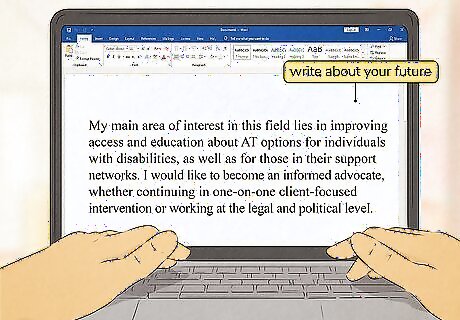
Write about your future. Where do you want to go next? Employers and college admissions want to hire people who want to succeed and want to go places. If you're writing an application letter, it's important to stand out by describing that you're an ambitious person who'll achieve at a high level. Describe where you want to go. Be specific. If you're writing to a college board, don't say, "I want to go to this college because I need a degree." That's obvious. What do you want to do with it? Why? If you're applying to a business, don't say, "I just need a job." That's obvious. Why this specific job?
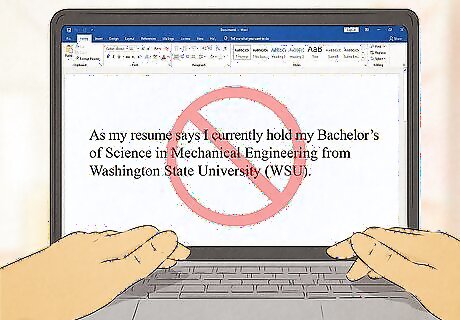
Don't include stuff that's also on your resume. Your application letter is your one chance in an application to stand out. Listing off the number from your GPA and the boring list of achievements from your resume isn't the best way to do that. The purpose of the letter is to get a sense of who you are, not a list of accomplishments. Don't use the letter to describe the list of schools you've attended, your GPAs, and a list of extra-curricular activities, unless it relates to some anecdote in the letter.
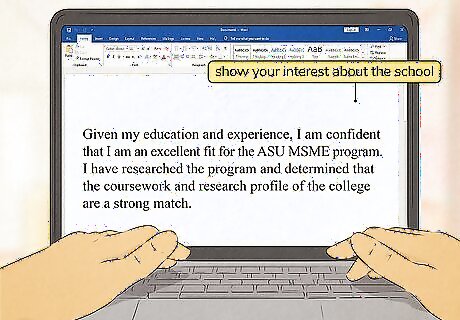
Demonstrate that you're familiar with the school you're applying to. Lots of people carpet-bomb the same letter to a bunch of different places, because that's a lot easier than actually writing a separate letter to every place you're applying. Research a little bit about each place, and take some time to make each letter unique, even if you're going from a template. If you're applying to schools, what do you like about the school? What faculty are you interested in? Why this school, instead of another? Be sure to explain how you see yourself fitting into the campus—that's what will really make you an ideal candidate for a school.
Formatting Application Letters
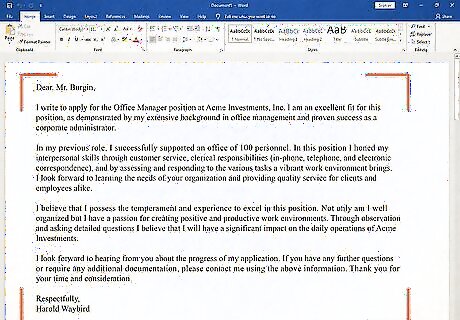
Keep it short. Cover letters should not be longer than one page, single-spaced. In most cases, you should get some kind of word-count to shoot for, which may be shorter or longer, depending on the purpose of the letter. Always defer to the guidelines you receive. If you don't get a word-count guideline, just focus on making one or two good points about yourself, and keeping it at that. No need to drone on four several pages.
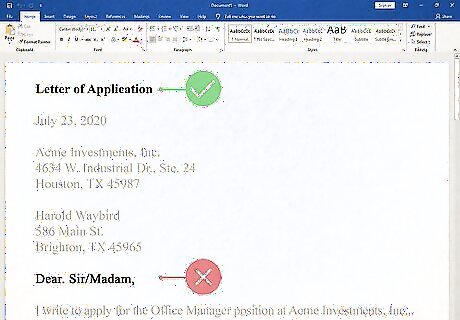
Only address the letter if you have someone to address it to. Addressing letters to, "All concerned" or "Sir or Madam" makes your letter look strange and like a computer wrote it. If you're applying, but don't know who is going to read it, leave off the salutation at the beginning and title the document instead, so it will be clear. Instead of a salutation, write, "Letter of Application" at the top left corner of the page, or put it in the header on the left side at the top. If you do have a contact, address it to them, making sure the name is spelled correctly. Then space down and start the body of the letter.
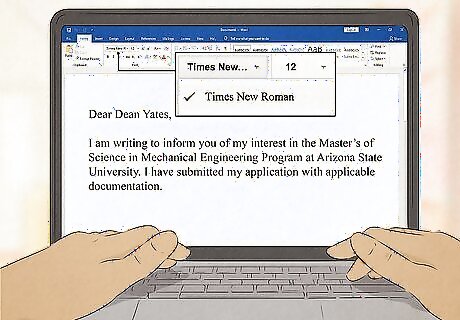
Use a standard font. Cover letters should always be word processed and single-spaced. Use a normal, standard font, like Calibri or Times New Roman. Avoid childish looking or gimmicky fonts, like Comic Sans when you're applying for jobs and school applications.
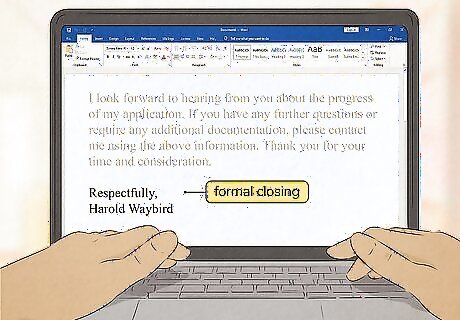
Use a formal closing. When you get to the end of your letter, add a space, then include a closing, like "Sincerely" and sign your name. Sometimes, it's appropriate to type your name, then print out the letter and sign it in pen. That can be a nice touch.
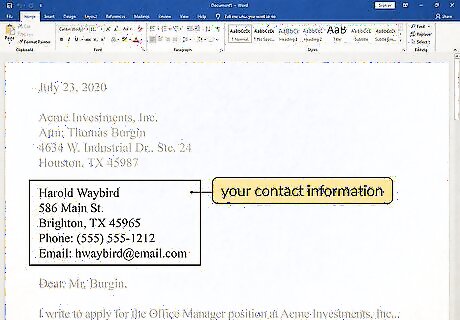
Put your contact information in the header. The following contact information should be included in the header of the document, usually over to the right margin: Your name Mailing address E-mail Telephone and/or fax number










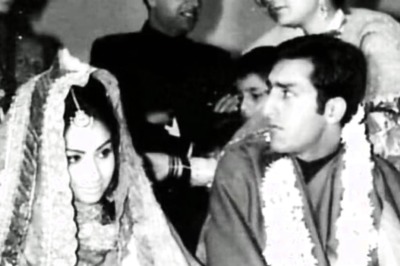



Comments
0 comment